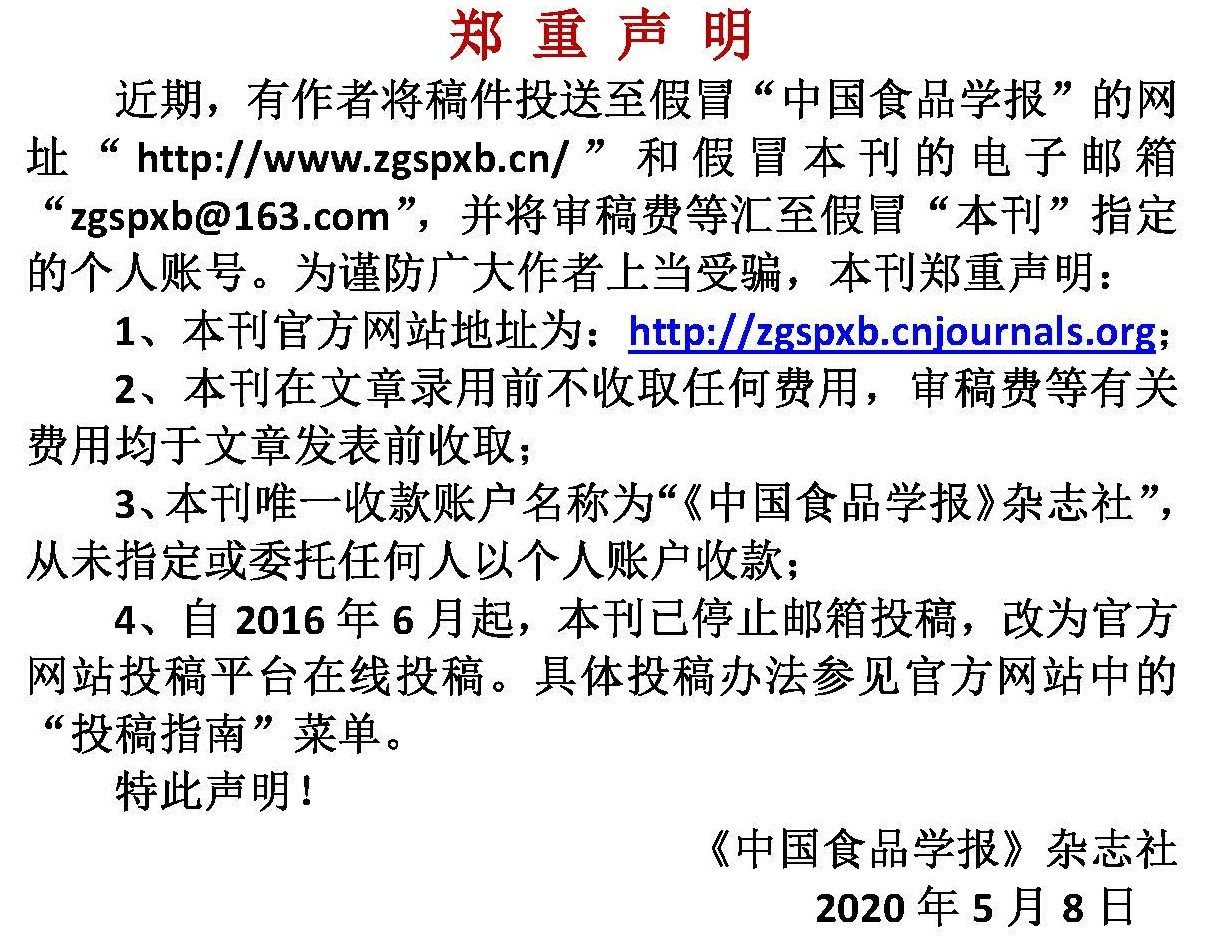低温保活运输对海鲈鱼应激及品质的影响
作者:
作者单位:
(1.上海海洋大学食品学院 上海 201306;2.食品科学与工程国家级实验教学示范中心(上海海洋大学) 上海 201306;3.上海水产品加工及贮藏工程技术中心(上海海洋大学) 上海 201306)
作者简介:
王琪(1998- ), 女,硕士生
通讯作者:
中图分类号:
基金项目:
“十三五”国家重点研发计划项目(2019YFD ;0901601):2019年上海市科技兴农重点攻关项目(2019- -02-08 -00- 10-F01143);上海市科委公共服务平台建设项目( 19D22284000)
Effects of Low Temperature and Alive Transportation on Stress and Meat Quality of Sea Bass (Lateolabrax maculatus)
Author:
Affiliation:
(1.College of Food Science and Technology, Shanghai Ocean University, Shanghai 201306;2.National Experimental Teaching Demonstration Center for Food Science and Engineering(Shanghai Ocean University), Shanghai 201306;3.Shanghai Aquatic Products Processing and Storage Engineering Technology Research Center(Shanghai Ocean University), Shanghai 201306)
Fund Project:
引用本文
王琪,梅俊,谢晶.低温保活运输对海鲈鱼应激及品质的影响[J].中国食品学报,2022,22(7):203-213
复制分享
文章指标
- 点击次数:
- 下载次数:
- HTML阅读次数:
历史
- 收稿日期:2021-07-12
- 最后修改日期:
- 录用日期:
- 在线发布日期: 2022-08-19
- 出版日期:
文章二维码

版权所有 :《中国食品学报》杂志社 京ICP备09084417号-4
地址 :北京市海淀区阜成路北三街8号9层 邮政编码 :100048
电话 :010-65223596 65265375 电子邮箱 :chinaspxb@vip.163.com
技术支持:北京勤云科技发展有限公司
地址 :北京市海淀区阜成路北三街8号9层 邮政编码 :100048
电话 :010-65223596 65265375 电子邮箱 :chinaspxb@vip.163.com
技术支持:北京勤云科技发展有限公司
